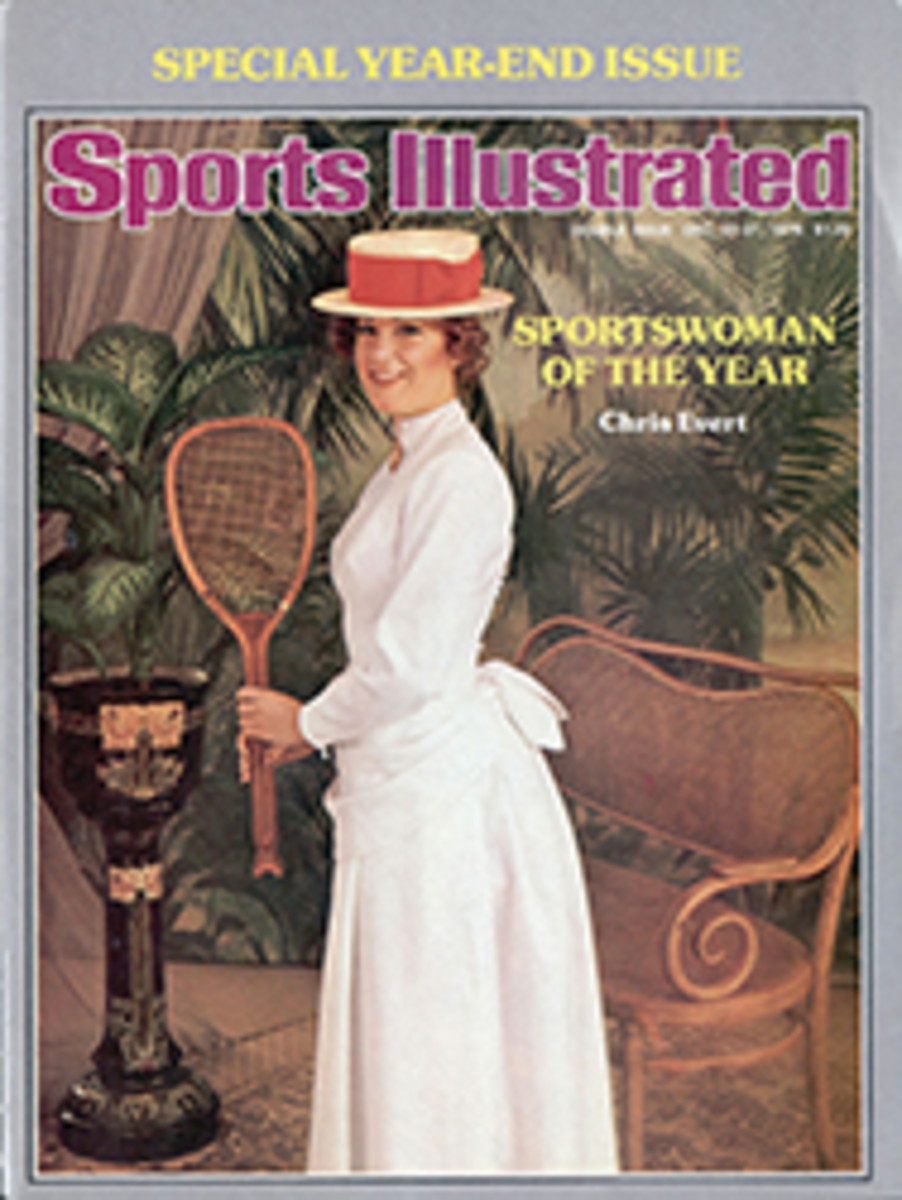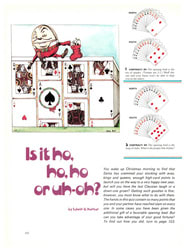
REPLAYING SOME SPORTING ROBBERIES WITH PICTURES THAT PROVE A POINT
Coming down the stretch in the 1933 Kentucky Derby, Brokers Tip and Head Play were nose to nose, with Charley O four lengths back. From the middle of the stretch to the finish line, Jockeys Don Meade, on Brokers Tip, and Herb Fisher, on Head Play, were flailing away with their whips. Only they weren't flailing their horses, they were flailing each other. They also were pushing, yelling, pulling at one another's saddle cloth and boots and otherwise engaging in the most conspicuous and ill-timed fight in horse-racing history. Brokers Tip and Head Play, unattended, went on doing what they were supposed to be doing, until Brokers Tip won by a nose. But as Bud Greenspan points out in We Wuz Robbed (Grossett & Dunlap, S12.95 hardcover and $5.95 paperback), both entries should have been disqualified and Charley O declared winner of the 1933 Derby.
Greenspan has reconstructed and documented 16 such incidents and illustrated them with 295 photographs. Not all of the episodes offer glaring examples of official error. Some of them recall odd or disputed events. Greenspan has concentrated on the moments of controversy, made stills from the frame-by-frame action of movie films and enlarged photographs to the point where he can offer a confident statement of what really happened.
Or of what didn't happen. Babe Didrikson did not jab Evelyn Hall in the ribs, as Evelyn claimed, in the 80-meter hurdles in the 1932 Olympics. The crucial goal which England was awarded in the 1966 World Cup finals against West Germany was not a goal—the ball hit the crossbar and dropped to the ground with so much spin that it bounced back onto the playing field; the ball was never entirely inside the goal as the rules require.
Greenspan calls the Russia-U.S. basketball game in the 1972 Olympics, "the worst miscarriage of justice in the history of the Games." He serves up proof in text and pictures to confirm what all U.S. basketball fans already know: we wuz, indeed, robbed. With the Soviet team leading 49-48 and six seconds to go, America's Doug Collins came up with a loose ball at midcourt and drove for the hoop. He missed the layup but was fouled. The clock showed three seconds remaining when he stepped up to sink the two free throws that put the U.S. ahead by 50-49. Still three seconds to go—or so everyone thought. Play resumed; the Russians missed a desperation shot. One second. And then began the bewildering sequence of whistles, time-outs and illegal interventions of highly placed (but unauthorized) officials that led to setting the clock back to three seconds. The Russians tossed the ball in from under their own basket, and Alexander Belov hit the shot that sealed the 51-50 dirty deed, with the referee protesting helplessly. "I consider this completely illegal," he said. But the case was closed. And the Russians still have possession of the gold medal.
The least convincing of the illustrated examples of official error are those claiming fouls in the boxing ring. It was Manager Joe Jacobs' outraged cry "We wuz robbed!"—when Jack Sharkey was awarded the decision over Max Schmeling in 1932—that gave Greenspan the title for his book, but he has included a disproportionate amount of photographic material on Sharkey that seems not to show much of anything. Here is Phaintin' Phil Scott writhing on the canvas claiming Sharkey fouled him; here is Sharkey felled by one of Primo Camera's invisible blows; here is Sharkey grabbing his midriff and claiming that Jack Dempsey had fouled him. (Robbery or not, that case was closed when Dempsey knocked him out with a terrific left to the jaw.) But the most careful photographic examination often fails to distinguish between a good fighter and a good actor.
Greenspan makes the point that in many of these incidents the participants often didn't know what had really happened. Ralph Neves, one of the leading jockeys in the country, was aboard Flanakins in second place in the fourth race at Bay Meadows on May 8, 1936 when the lead horse fell, bringing down four other horses. Neves went over his horse's head and Flanakins, spine broken, rolled over directly on top of the jockey. When Neves was finally pulled free, two physicians pronounced him dead. The crowd stood in silent prayer as an ambulance took the jockey to a hospital, where he was wrapped in a white sheet and laid on a cold slab as a death certificate was being prepared.
After lying there some 30 minutes, Neves opened his eyes. "I couldn't see anything," he said. "It was pitch black. Finally I found a door and ran like hell." Wearing only his boots and the sheet, he persuaded a taxi driver to take him back to the track. There, he was alarmed at the sight of a crowd and began to run, the crowd chasing him. Two jockeys eventually caught Neves and took him to the track's first-aid room where, aside from some bruises and a case of shock, he was found to be in good shape. Greenspan uses 23 photographs to document the story, which might well seem unbelievable without them. He adds that Neves, now the wealthy owner of a Santa Anita restaurant, admits that he did not know the entire sequence of events until he studied these pictures.

